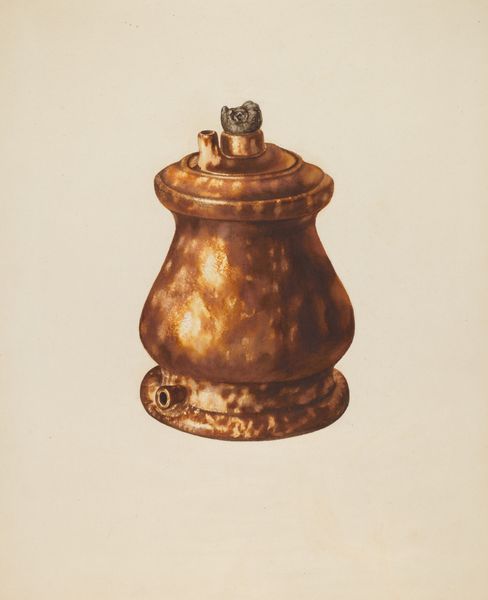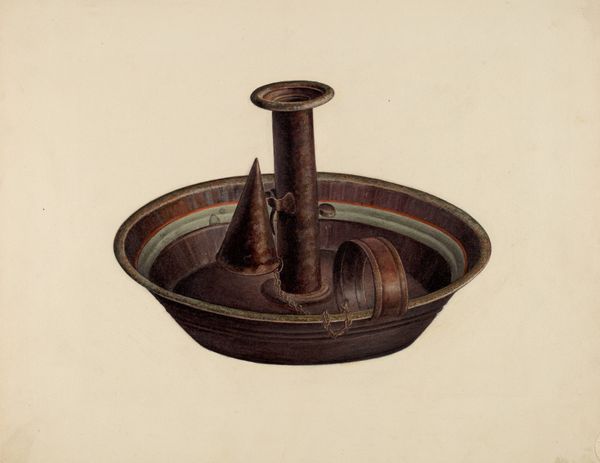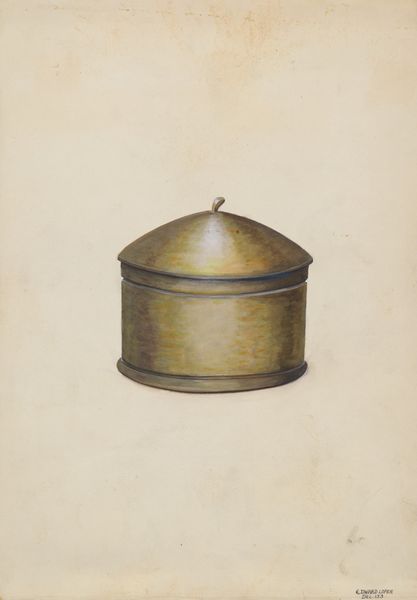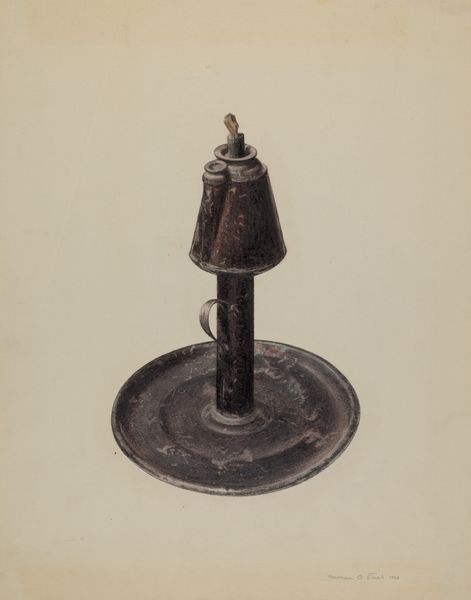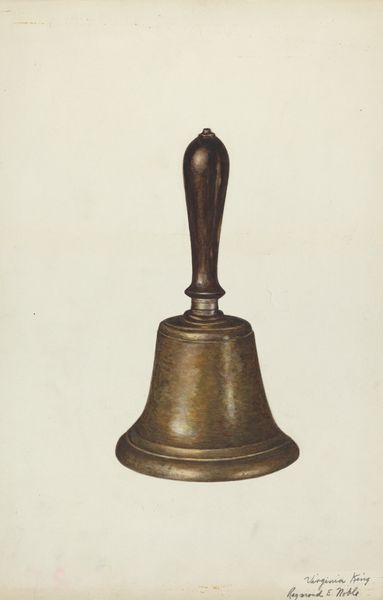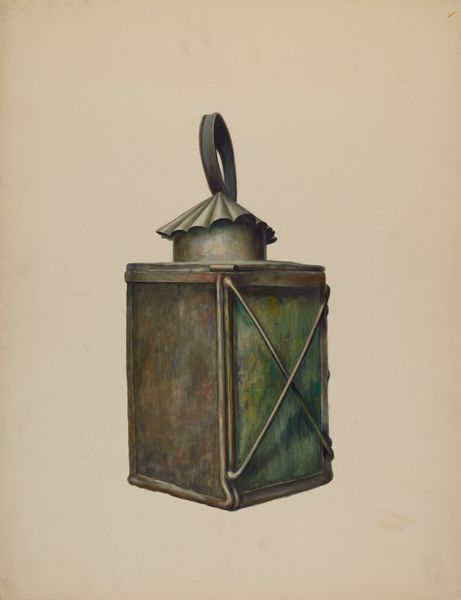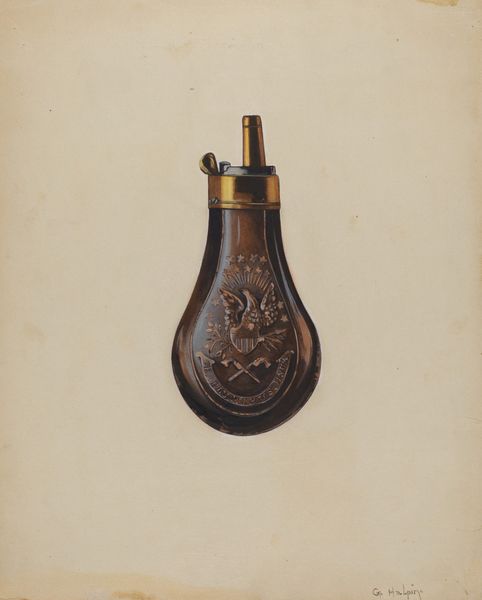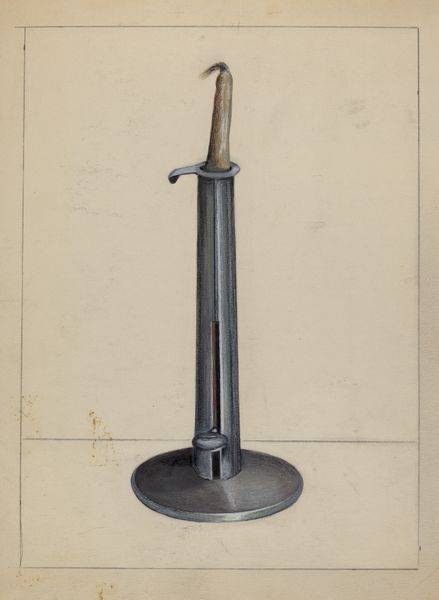
painting, oil-paint
#
painting
#
oil-paint
#
sculpture
#
realism
Copyright: Modern Artists: Artvee
Editor: Here we have Scott Fraser's "Pewter Oil Can," an oil painting of a rather unassuming object. The light reflecting off the can’s surface is what struck me first. It's almost sculptural in its rendering. What do you make of this particular still life? Curator: For me, it begins with understanding the material history inherent in both the subject and the medium. This isn't just any can; it's pewter, likely used for lubricating machinery – an artifact of industrial labor. Fraser's choice to depict it in oil paint, a material born of extraction and industry itself, creates a layered dialogue about production. Consider the means: oil paint on a canvas, representing a tool reliant on…oil. Editor: That's a fascinating point about the medium mirroring the subject. So, are you suggesting the painting's value lies in this commentary on industry and materiality rather than any aesthetic quality? Curator: Not solely, but undeniably linked. The meticulous realism, the way Fraser captures the sheen of the metal – it’s a testament to the artist’s labor. He elevates a mundane, functional object, giving value to something typically overlooked in the grand scheme of "high art.” Does it prompt you to consider whose labor is valorized and whose is not? Editor: I see what you mean. It's a quiet but compelling statement. I guess I initially saw just a nicely rendered object, but now I appreciate the deeper implications of the materials and the labor involved, both in the depicted object and the painting itself. Curator: Precisely. By acknowledging the materiality of art and its subject, we begin to challenge traditional hierarchies of value. We move beyond the surface, into the network of production. Editor: I’ll definitely look at still life painting differently from now on. It is more than what meets the eye. Curator: Agreed! This close looking has opened new pathways to engage with everyday object and their production networks.
Comments
No comments
Be the first to comment and join the conversation on the ultimate creative platform.
